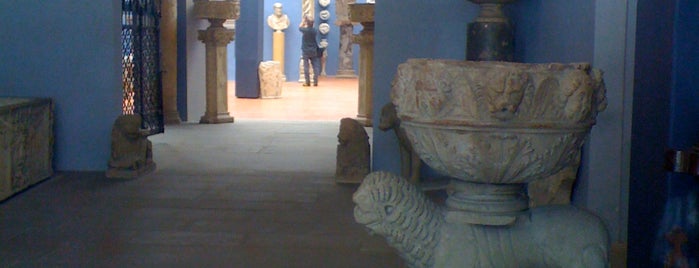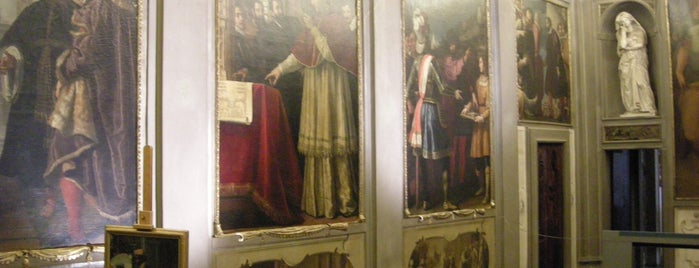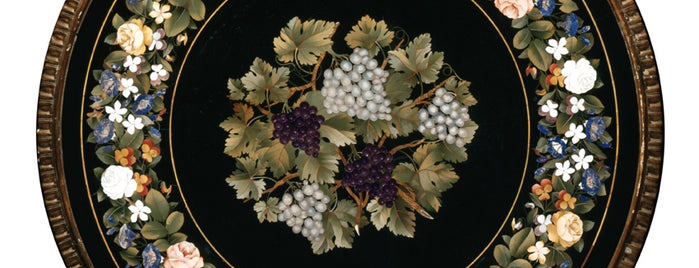![]() It represents the latest Florentine example of a public collection formed between the seventeenth and the eightteenth centuries. The museum is full of masterpieces such as the Adoration of the Child. Read more.
It represents the latest Florentine example of a public collection formed between the seventeenth and the eightteenth centuries. The museum is full of masterpieces such as the Adoration of the Child. Read more.
![]() Stefano Bardini (1836-1922) was an excellent connoisseur of art and an artful and unconventional antiques dealer. Bardini donated his private collection to Florence Read more.
Stefano Bardini (1836-1922) was an excellent connoisseur of art and an artful and unconventional antiques dealer. Bardini donated his private collection to Florence Read more.
![]() The Alinari National Museum of Photography, linked to the historic and internationally famous Florentine studio, is housed in a 15th century building known as “delle Leopoldine”. Read more.
The Alinari National Museum of Photography, linked to the historic and internationally famous Florentine studio, is housed in a 15th century building known as “delle Leopoldine”. Read more.
![]() The museum is situated in the old refectory of the convent, erected by Augustinian hermit friars next to the church of Santo Spirito. Read more.
The museum is situated in the old refectory of the convent, erected by Augustinian hermit friars next to the church of Santo Spirito. Read more.
![]() The museum collects the finest porcelain in Europe bought by Peter Leopold and Ferdinand III, together with porcelain from stately homes of Parma, Piacenza and Sala Baganza Read more.
The museum collects the finest porcelain in Europe bought by Peter Leopold and Ferdinand III, together with porcelain from stately homes of Parma, Piacenza and Sala Baganza Read more.
![]() The museum exhibits the two marble masterpieces of Michelangelo’s early youth (Madonna of the Stairs and Battle of Centaurs) and the art collections of his family. Read more.
The museum exhibits the two marble masterpieces of Michelangelo’s early youth (Madonna of the Stairs and Battle of Centaurs) and the art collections of his family. Read more.
![]() With roughly six thousand pieces, including ancient and modern clothes, accessories and theatrical costumes, you can consider it the only museum of history of fashion in Italy Read more.
With roughly six thousand pieces, including ancient and modern clothes, accessories and theatrical costumes, you can consider it the only museum of history of fashion in Italy Read more.
![]() The museum collects works in polychrome marble and semiprecious stones, paintings on stones, oil paintings and stone work tools. Read more.
The museum collects works in polychrome marble and semiprecious stones, paintings on stones, oil paintings and stone work tools. Read more.
![]() The Fondazione Palazzo Strozzi offers a full programme of internationallevel exhibitions and cultural events within the setting of this architectural masterpiece of the Florentine Renaissance. Read more.
The Fondazione Palazzo Strozzi offers a full programme of internationallevel exhibitions and cultural events within the setting of this architectural masterpiece of the Florentine Renaissance. Read more.
![]() The Museum of the Argenti houses the treasure of the Medici Family: the stone vases of Lorenzo the Magnificent, the cameos and carvings of Cosimo I Read more.
The Museum of the Argenti houses the treasure of the Medici Family: the stone vases of Lorenzo the Magnificent, the cameos and carvings of Cosimo I Read more.
![]() The collection includes 35 paintings, with important works by Andrea del Castagno, Giovanni Bellini, Savoldo, 12 sculptures, among which the Bernini’s San Lorenzo stands out. Read more.
The collection includes 35 paintings, with important works by Andrea del Castagno, Giovanni Bellini, Savoldo, 12 sculptures, among which the Bernini’s San Lorenzo stands out. Read more.
![]() The refectory of the All Saints Monastery is famous for the great fresco painted in 1488 by Domenico Ghirlandaio. Read more.
The refectory of the All Saints Monastery is famous for the great fresco painted in 1488 by Domenico Ghirlandaio. Read more.
![]() The refectory has a beautiful fresco by Perugino depicting the Last Supper, accompanied in a recent layout (2006) by other Tuscan and Italian artists influenced by Pietro Perugino. Read more.
The refectory has a beautiful fresco by Perugino depicting the Last Supper, accompanied in a recent layout (2006) by other Tuscan and Italian artists influenced by Pietro Perugino. Read more.
![]() The Museum takes its name from one of the masterpieces of the Renaissance painting, the grandiose Last Supper fresco painted in the refectory by Andrea del Sarto. Read more.
The Museum takes its name from one of the masterpieces of the Renaissance painting, the grandiose Last Supper fresco painted in the refectory by Andrea del Sarto. Read more.













